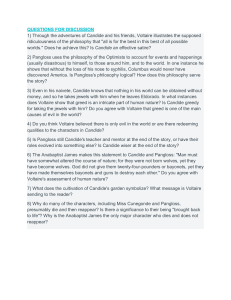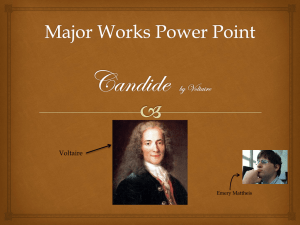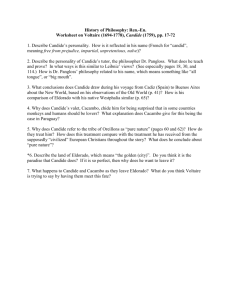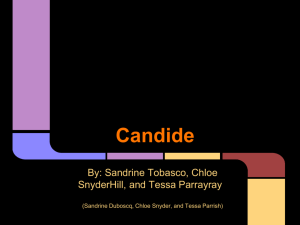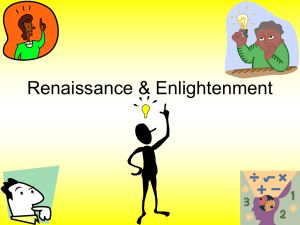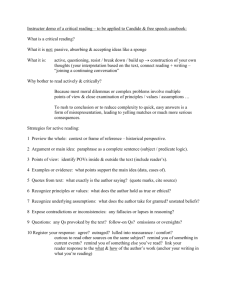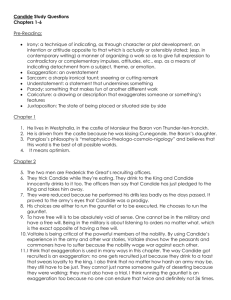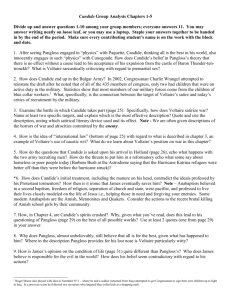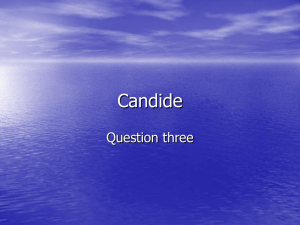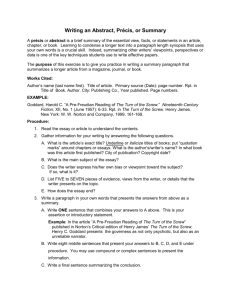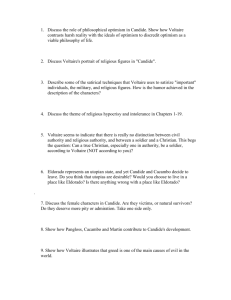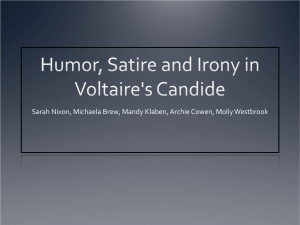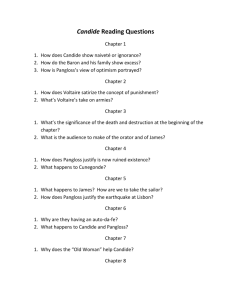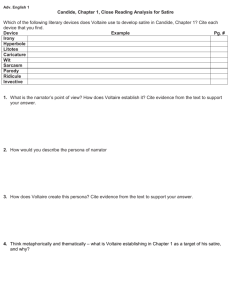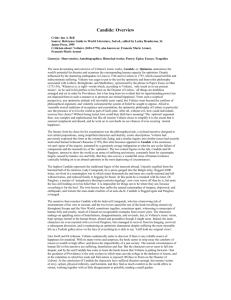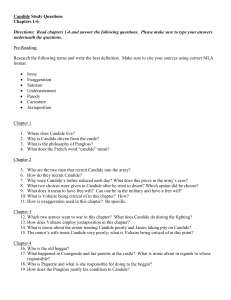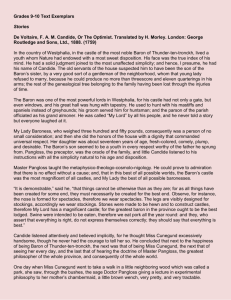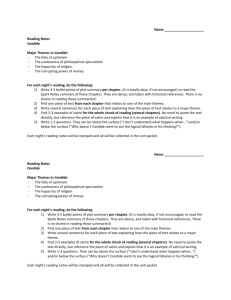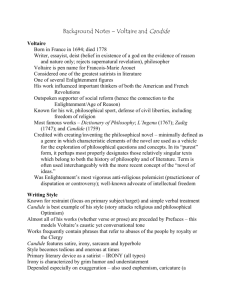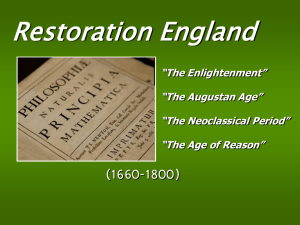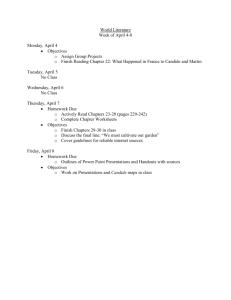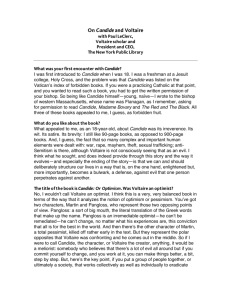Dec. 5
advertisement
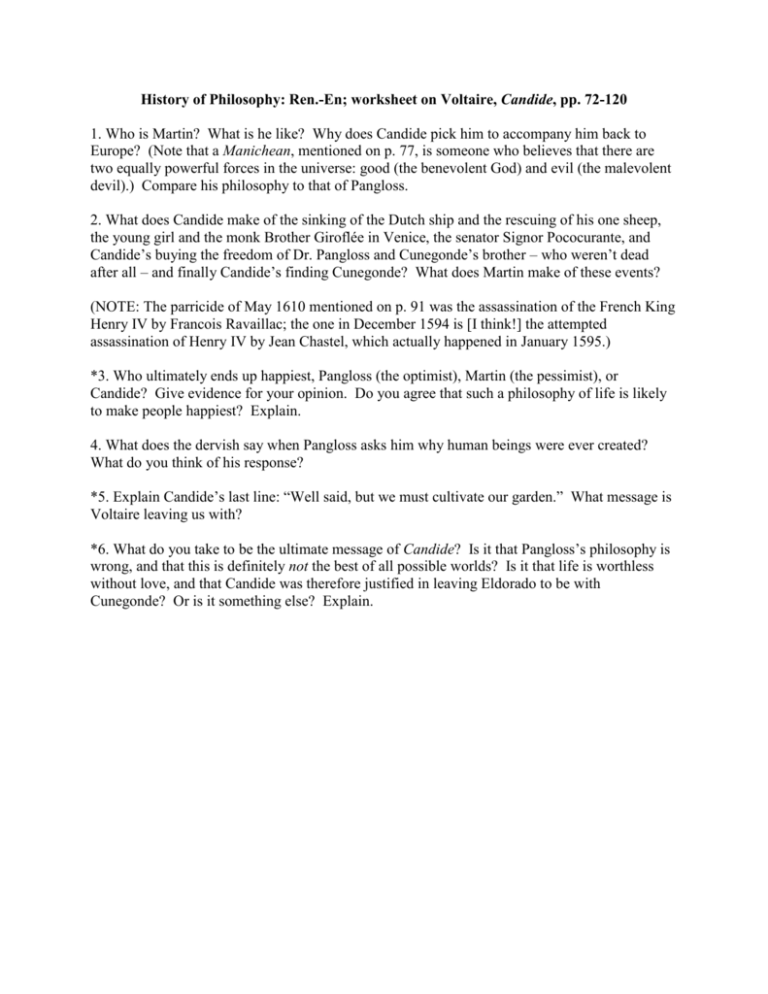
History of Philosophy: Ren.-En; worksheet on Voltaire, Candide, pp. 72-120 1. Who is Martin? What is he like? Why does Candide pick him to accompany him back to Europe? (Note that a Manichean, mentioned on p. 77, is someone who believes that there are two equally powerful forces in the universe: good (the benevolent God) and evil (the malevolent devil).) Compare his philosophy to that of Pangloss. 2. What does Candide make of the sinking of the Dutch ship and the rescuing of his one sheep, the young girl and the monk Brother Giroflée in Venice, the senator Signor Pococurante, and Candide’s buying the freedom of Dr. Pangloss and Cunegonde’s brother – who weren’t dead after all – and finally Candide’s finding Cunegonde? What does Martin make of these events? (NOTE: The parricide of May 1610 mentioned on p. 91 was the assassination of the French King Henry IV by Francois Ravaillac; the one in December 1594 is [I think!] the attempted assassination of Henry IV by Jean Chastel, which actually happened in January 1595.) *3. Who ultimately ends up happiest, Pangloss (the optimist), Martin (the pessimist), or Candide? Give evidence for your opinion. Do you agree that such a philosophy of life is likely to make people happiest? Explain. 4. What does the dervish say when Pangloss asks him why human beings were ever created? What do you think of his response? *5. Explain Candide’s last line: “Well said, but we must cultivate our garden.” What message is Voltaire leaving us with? *6. What do you take to be the ultimate message of Candide? Is it that Pangloss’s philosophy is wrong, and that this is definitely not the best of all possible worlds? Is it that life is worthless without love, and that Candide was therefore justified in leaving Eldorado to be with Cunegonde? Or is it something else? Explain.
